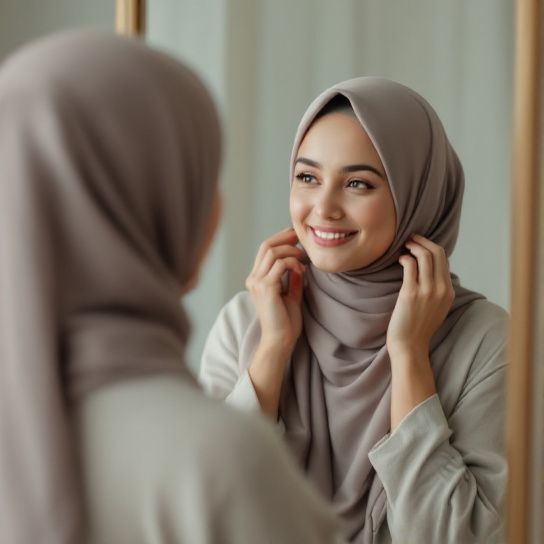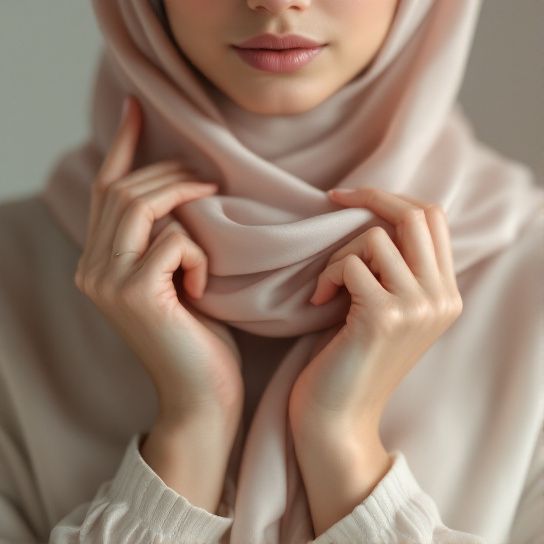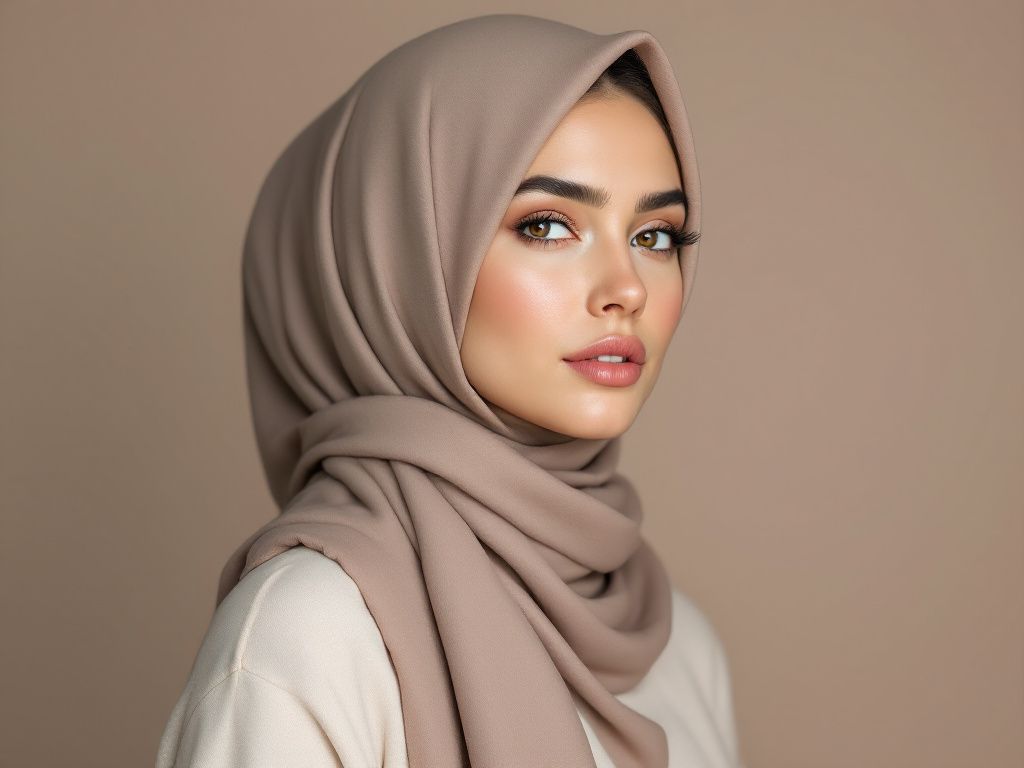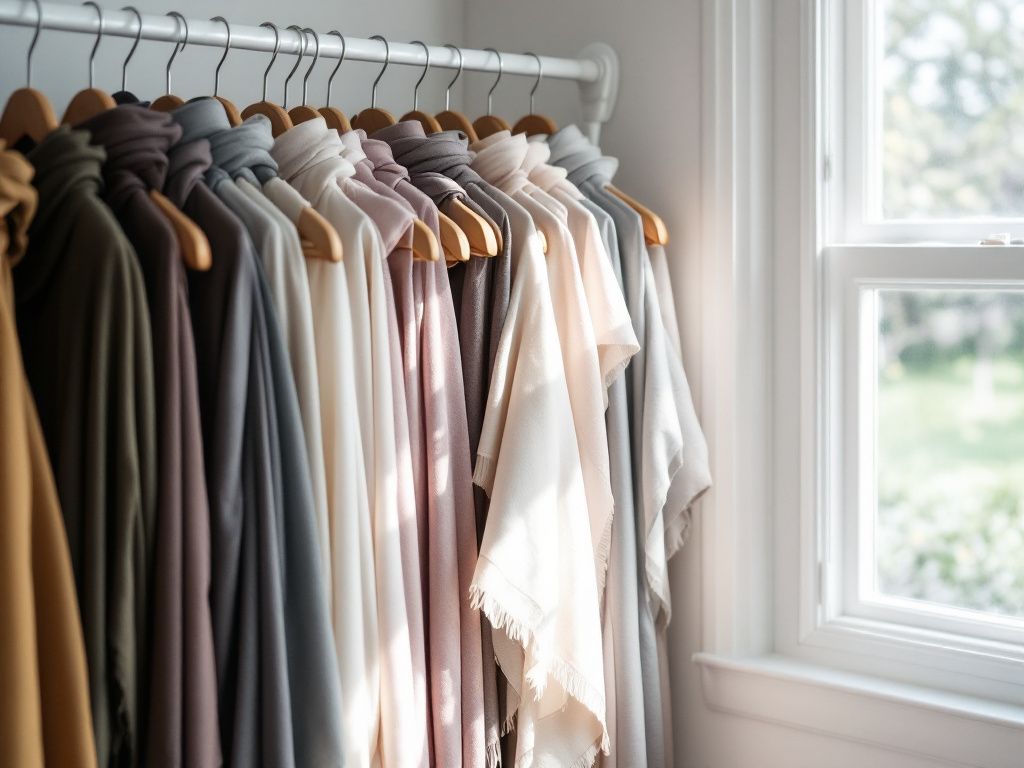Wearing Hijab at Home: Embrace Comfort and Tradition

So, let’s talk about something you might already be pondering: wearing hijab at home. It’s this thing that’s both personal and collective, private yet public, all rolled into one piece of fabric.
The Intricacies of Hijab at Home
Getting up in the morning and deciding whether to wear your hijab at home can be a nuanced decision. For some, it’s about maintaining a spiritual connection. For others, it’s a practice entwined with daily rituals, no matter the setting. And yet, for others, it might be all about comfort and ease—let’s not kid ourselves by pretending having your hair down isn’t an option, right?
Why Wear Hijab at Home?
The reasons can vary wildly, and no, there’s no one-size-fits-all answer here.
- Spiritual Practice: Some people feel more spiritually attuned when they’re in hijab, grounding their day with each wrap and tuck. It’s a reminder, a personal commitment that keeps you focused on your own values and principles.
- Cultural Norms: Maybe you come from a household or a community where it’s the norm to keep your hijab on, surrounded by family or friends. There’s comfort in routine, a shared experience that turns a cloth into a metaphorical shelter.
- Visitors and Mixed Company: Let’s not forget the wild card entry of unexpected visitors. Maybe you live with family or roommates, and wearing the hijab becomes a practical choice for those pop-in moments.
Finding Your Comfort Zone

The beauty of wearing hijab at home is the flexibility—it lets you decide what works best. Some might think, “Oh, no one’s around,” and toss it aside; others might tweak it for a bit more ease without fully removing it. And then there are those lazy, snowy mornings with a warm cup of tea where it just nestles in perfectly as part of your cozy attire.
**Creating Comfy Styles**
- Light Fabrics: Anything breathable and soft. Think cotton or jersey, they bend with you and breathe.
- Caps and Wraps: On more relaxed days, a secure cap under the hijab might do—keep it light and simple.
- Turban Styles: These can offer a loose wrap, keeping your head covered while avoiding too much warmth.
Unveiling the Personal Connection
Let’s wander into the more personal side of things. Wearing hijab at home is not just about covering up. It’s part of a daily rhythm that reflects personal beliefs, emotional comfort, or maybe just a great solution to a bad hair day—trust me on this one.
Personal experiences vary, and that’s what makes this topic so compelling. You possess the creative license to pair your headscarf with pajamas, aprons, or anything that paints the picture of your daily life.
Practical Ways to Style It Up

In terms of creativity, the hijab is like fashion zen, allowing you to express yourself. These little adjustments can make it not just a statement of faith or style but part of your evolving home life.
- Room-to-Room Consistency: Sometimes, maintaining a hijab-ready look throughout your home can give you peace of mind. One less thing to think about, right?
- Seasonal Choices: Have fun with patterns and colors. Winter calls for thicker, cozy materials. Summers invite light, airy fabrics.
- Matching Ensembles: Feeling chic even when indoors can light up your mood. Pair your hijab with similar tones in your outfit, whether you’re in sweats or your tea-time best.
Addressing Challenges
Everyday life indoors isn’t without its quirks when it comes to hijab wearing. Headaches? Hairline issues after a long day? They’re real. Securing the balance between tradition and everyday practicality sometimes leads to graceful imperfect solutions.
Daily Obstacles and Tips
- Headscarf Management: Too tight or too loose can always affect comfort. Small alterations can make a huge difference.
- Hair Care: Make time to care for your hair—hijab days often require a bit of scalp and hair moisturizing.
- Portable Back-Ups: Having a secondary, easily accessible hijab in each commonly used room could be a game-changer.
Community Insights

Speaking to women from different backgrounds reveals an interesting tapestry of practice and perspectives when it comes to wearing hijab at home. Some welcome the break it provides from their outside-world persona, and others feel the magical everyday acceptance and belonging it embodies.
Building a supportive community around such topics can be enlightening and empowering. Women share tips, styles they enjoy, and solutions to common problems, forming an unwritten sisterhood.
Embrace Your Own Style
Navigating through these choices will often leave you connecting more deeply with those threads of tradition and identity intertwined with daily comforts, transforming routines into something deeply personal and uniquely yours. So if you’ve been curious about those who wear their hijab at home or considering it yourself, give it a try—bend the fabric, rework what feels stringent, and accommodate your changing moods and needs.
By nurturing these practices and understanding the personal connections baked into this choice, you’re not just rolling with a mere act or tradition—you’re weaving through the beautiful fabric of life’s everyday interactions and comfort.
In the end, wearing a hijab at home can become a tapestry of personal stories, interpretations, quintessential comfort, and at its heart, the choice that suits you the best.
Frequently Asked Questions
What are the benefits of using a hair mask in my hair care routine?
Using a hair mask can provide several benefits, including hydration, smoothing, strengthening, curl definition, heat protection, and damage repair. Hair masks infuse the hair with moisture, help coat the hair shaft to seal split ends, reduce breakage, and protect the hair from heat styling and environmental damage[1][4].
What ingredients should I look for in a hair mask?
Effective hair masks often include ingredients such as coconut oil, argan oil, shea butter, honey, avocado oil, green tea, and coconut water. These ingredients provide nourishment, moisturize, and protect the hair, offering benefits like softening, moisturizing, and protecting against damage[2][5].
How often should I use a hair mask in my routine?
You should use a hair mask whenever your hair feels dry, unmanageable, or in need of intense hydration. This can vary depending on your hair type and needs, but generally, using a hair mask once or twice a week can help maintain healthy and moisturized hair[1][4].
How do I apply a hair mask for the best results?
To apply a hair mask effectively, shampoo your hair first, then apply the mask, focusing especially on the ends where hair tends to be the most damaged. Leave the mask on for anywhere from 10 minutes to overnight, depending on the type of mask and your hair’s needs[1][4].
References






